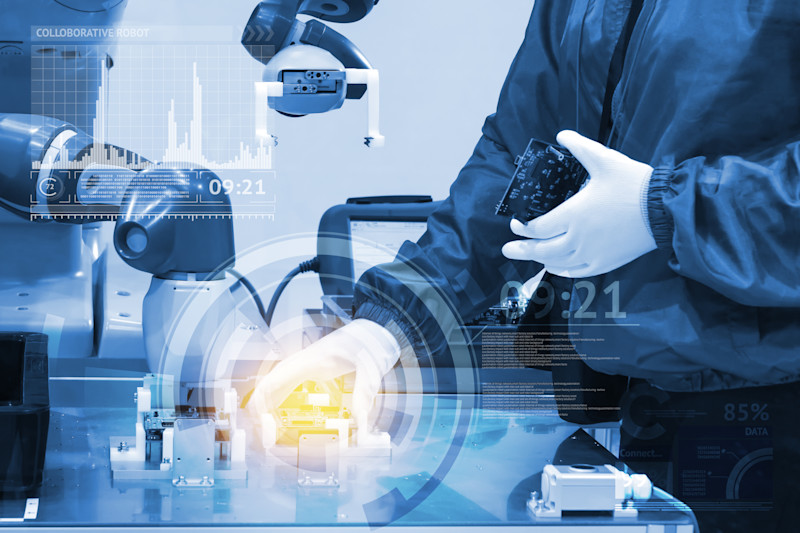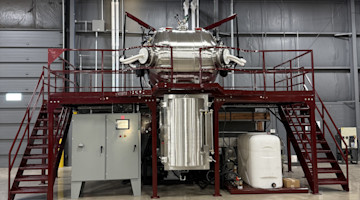Until recently, in order to deploy robots in your plant, your business would need to hire a systems integrator who procured the hardware, designed the process, and programmed the robots. Experienced systems integrators play an invaluable role for most deployments, especially large ones. In addition to designing, programming, and testing robotics solutions, they also typically provide 24/7 support and training. In just the past year, however, several new applications have come to market to make programming and deploying cobots and robots much easier and faster, and they are designed for workers with very little to no programming experience. This may represent another disruptive technology. If the applications are as functional as they claim to be, we can likely expect to see more coming onto the market in the near future. We’ll take a look at four recent sets of software tools to provide a flavor of what’s out on the market right now.
Symbio Robotics: SymbioDCS
Symbio Robotics recently launched a middleware and python programming framework called SymbioDCS to simplify the programming of industrial robots. It is a robot-agnostic platform that supports the development of real-time AI solutions to enable industrial robots to quickly learn and execute tasks. The company says that its focus is on providing solutions that enable companies to adopt AI as a core competency, as opposed to the more traditional automation approach, which is to provide a custom solution to a specific problem.
The platform’s machine learning tools gather and analyze data from advanced sensors in order to automatically optimize control policy parameters, in turn creating a data-driven, real-time feedback loop. Current applications include general assembly, bin picking, fastening, and moving line. The technology can be retrofitted into existing industrial robots to make them faster, more capable, and more flexible. Although the publicly available details of how its technology works are still vague, the company is working with Nissan and Toyota; details on these relationships are not public.
Rapid Robotics: Rapid Machine Operator
Rapid Robotics recently launched a pretrained robotic machine operator, aptly called the Rapid Machine Operator (Rapid), that understands how to perform common machine tasks without the need for programming or systems integration. The technology combines proprietary machine vision and deep learning AI with robotic hardware and can handle most machine operator jobs. Out of the box, it can perform simple tasks such as injection molding, pad printing, heat stamping, pick and place, and dozens of other tasks across manufacturing sectors.
The Rapid Machine Operator enables manufacturers to easily deploy a pretrained cobot in hours and move it between tasks or machines as needed. The technology uses a simple touchscreen interface and requires no specialized robotics skills. Users simply select a machine type from Rapid’s touchscreen interface, input variables specific to a project, and the cobot completes the rest. It also comes with fixtures, grippers, cameras, and other components as well as a proprietary built-in computer vision system.
Epson RC+: Industrial Automation Development Software
Epson has also released a set of tools for automation efficiency. Called Epson RC+, the tools work seamlessly with all Epson robots and come free of charge with Epson SCARA and 6-axis robots as well. Users with no programming experience can use Epson RC+’s syntax assist function, intuitive interface, and intuitive commands to quickly develop applications. More than 500 commands and statements include motion functions, I/O control, variables and data types, program control, and more. Epson RC+ also enables users to build and fine-tune their applications with an integrated 3D simulator. Users can program the work cell, upload CAD models, test different end-of-arm tools, and add additional components such as tables, feeders, or various types of guarding in real time.
KUKA: KUKA.AppTech
Industrial robotics manufacturer KUKA recently released a portfolio of application software modules for nonprogrammers called KUKA.AppTech for the most common robot applications. Application modules for frequently used functions such as common motion routines and sequences facilitate programming so that code does not need to be developed from scratch. A module can be quickly accessed and integrated into existing processes, allowing robots to be adapted to new tasks more quickly and easily. Modules can facilitate handling components, welding, bonding, measuring, and other processes.






